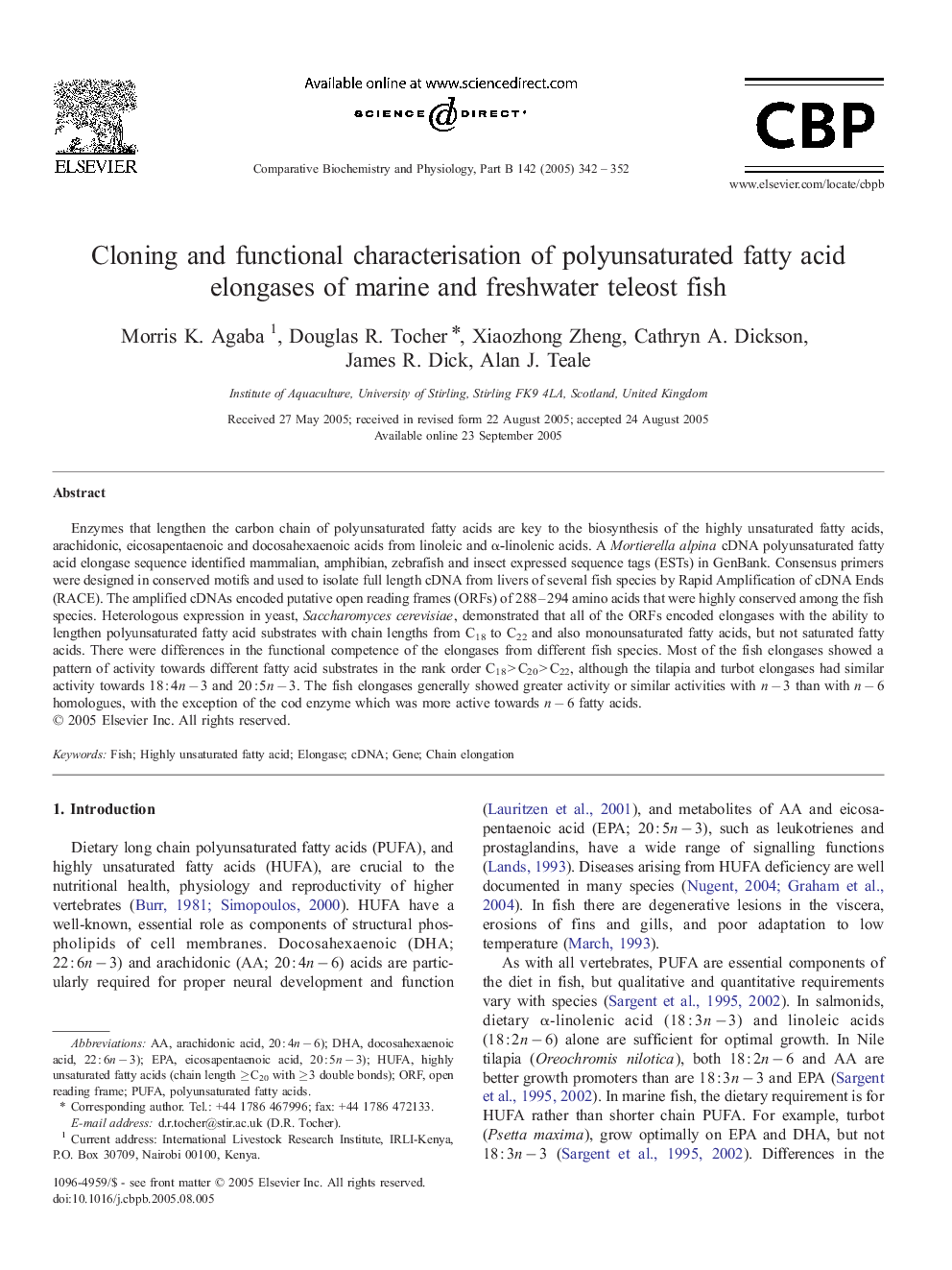| Article ID | Journal | Published Year | Pages | File Type |
|---|---|---|---|---|
| 10820557 | Comparative Biochemistry and Physiology Part B: Biochemistry and Molecular Biology | 2005 | 11 Pages |
Abstract
Enzymes that lengthen the carbon chain of polyunsaturated fatty acids are key to the biosynthesis of the highly unsaturated fatty acids, arachidonic, eicosapentaenoic and docosahexaenoic acids from linoleic and α-linolenic acids. A Mortierella alpina cDNA polyunsaturated fatty acid elongase sequence identified mammalian, amphibian, zebrafish and insect expressed sequence tags (ESTs) in GenBank. Consensus primers were designed in conserved motifs and used to isolate full length cDNA from livers of several fish species by Rapid Amplification of cDNA Ends (RACE). The amplified cDNAs encoded putative open reading frames (ORFs) of 288-294 amino acids that were highly conserved among the fish species. Heterologous expression in yeast, Saccharomyces cerevisiae, demonstrated that all of the ORFs encoded elongases with the ability to lengthen polyunsaturated fatty acid substrates with chain lengths from C18 to C22 and also monounsaturated fatty acids, but not saturated fatty acids. There were differences in the functional competence of the elongases from different fish species. Most of the fish elongases showed a pattern of activity towards different fatty acid substrates in the rank order C18 > C20 > C22, although the tilapia and turbot elongases had similar activity towards 18 : 4n â 3 and 20 : 5n â 3. The fish elongases generally showed greater activity or similar activities with n â 3 than with n â 6 homologues, with the exception of the cod enzyme which was more active towards n â 6 fatty acids.
Keywords
Related Topics
Life Sciences
Biochemistry, Genetics and Molecular Biology
Biochemistry
Authors
Morris K. Agaba, Douglas R. Tocher, Xiaozhong Zheng, Cathryn A. Dickson, James R. Dick, Alan J. Teale,
